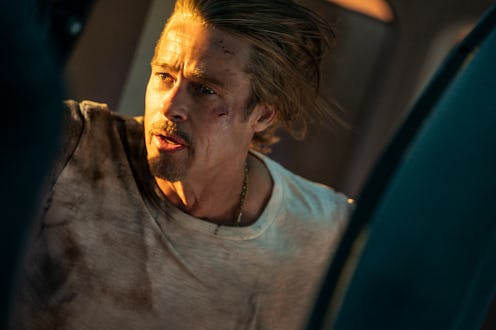TV & Movies
The Biggest Differences Between Bullet Train & The Book It’s Based On
Kōtarō Isaka’s novel was slightly altered for the big screen.

If you’re looking to read the book Bullet Train is based on before watching the movie (or vice versa), you’re in for two totally different experiences.
David Leitch’s film is based on Kōtarō Isaka’s 2010 novel, Maria Beetle (Maria Bītoru) — the book was only translated into English and released in the United States last year, but the film rights were secured by Sony before the translated novel even sold to an English-language publisher. The movie boasts an A-list cast, including Brad Pitt, Aaron Taylor-Johnson, Hiroyuki Sanada, Michael Shannon, Joey King, and features plenty of fast-paced, entertaining fight sequences. Critics have been lukewarm to Bullet Train, but it remains to be seen how audiences will respond to the big-budget spectacle. Warning: major spoilers for Bullet Train follow.
The story follows several assassins aboard a Hayate train from Tokyo to Kyoto, who all find themselves not-so-coincidentally crossing paths. While Leitch’s adaptation follows a nearly-identical plot and remains (mostly) faithful to its characters’ idiosyncrasies — like one hitman’s bad luck and another’s love of Thomas and Friends — there are differences between the source material and the big-screen adaptation.
Below, the major differences between the book and the Bullet Train movie.
The film raised eyebrows for whitewashing key characters from the book.
In a controversial move, Leitch’s cinematic adaptation whitewashed the novel’s Japanese protagonists. Many have criticized the filmmakers’ decision to cast Pitt, Bullock, Shannon, and King (among others) as characters who are Japanese in Isaka’s novel — including David Inoue, Executive Director of the Japanese American Citizens League. He told AsAmNews earlier this year that the non-Asian actors in Bullet Train “should be questioned on their allyship with the Asian community,” adding: “To see a film set in Japan with Japanese characters only as the background is offensive, and some of them should have been asking questions about this. Someone of Brad Pitt’s stature has the ability to do that and he failed to say anything.”
However, Maria Beetle’s author doesn’t seem to mind the alteration. Isaka told The New York Times last month the characters from his book are “not real people, and maybe they’re not even Japanese,” saying that he’s always dreamed that Bullet Train would one day become a Hollywood blockbuster. “I don’t have any feeling of wanting people to understand Japanese literature or culture,” Isaka continued. “It’s not like I understand that much about Japan, either.”
The character of “The Prince” is gender-swapped.
Another liberty the filmmakers took was changing “The Prince” — the seemingly-innocent, highly sociopathic teenager — from male to female.
Joey King (The Kissing Booth trilogy), who took on the role, couldn’t be happier with this decision. “I loved my character, everything how she was written, how villainous she was, but then also that her name is so strong and powerful,” she told Digital Spy last month. "It made me so happy because I was like, ‘This name feels like the perfect way for me to build the character around her because it made me feel so strong and powerful’.”
The movie is more of a comedy than Isaka’s novel.
While the book is primarily a thriller with some comedic elements, the movie leans more into the comedy.
Speaking to HERO Magazine in March 2022, actor Aaron Taylor-Johnson, who plays one half of the assassin duo Tangerine and Lemon, revealed that the tone of the film changed mid-production “Originally this thing was quite a dark, R-rated, vicious action piece, but we hammed it up and made it fun. I don’t know what happened, but it became a comedy!” the 32-year-old actor shared. “I think it’s because the atmosphere was just surrounded by a cloud of fear and ultimately Brian [Tyree Henry, who plays Lemon] and I felt it was our job to bring light and laughter to set, so if we made the crew laugh it was a good day.”
Leitch backed up Taylor-Johnson’s statement in an interview with Collider earlier this month. “I think almost every scene in the movie is there from the original script, but it's distilled into the essence of what it needed to be for this. So yeah, it's changed, but not tremendously from the project,” Leitch said.